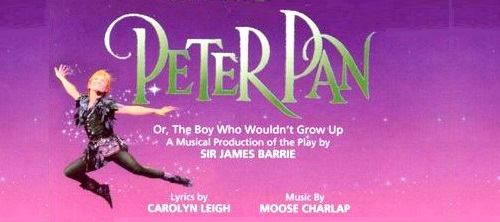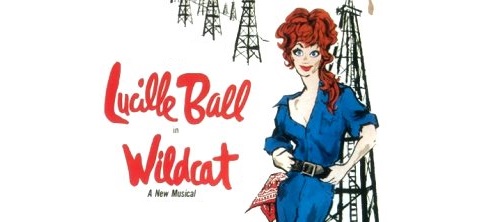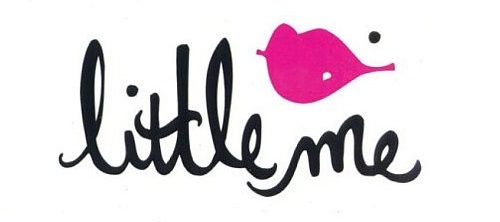Pas de biographie disponible.
Compositeur Musique additionelle Librettiste Parolier Metteur en scène Chorégraphe Producteur création Producteur version

Musical
Musique: Jule Styne • Moose Charlap • Paroles: Adolph Green • Betty Comden • Carolyn Leigh • Livret: Production originale: 14 versions mentionnées
Dispo: Synopsis Génèse Liste chansons
Genèse: Several versions of Peter Pan were mounted early in the 20th century. In a nod to the original play, and the pantomime tradition it derives from, the title character of Peter Pan in the musical is usually played by a woman, including Mary Martin, Sandy Duncan and Cathy Rigby, among others. Producer Edwin Lester, founder and director of the Los Angeles Civic Light Opera, obtained the American rights to Peter Pan and adapted it as a play with music for Mary Martin. The show was not successful in its pre-Broadway West Coast tour, so director Jerome Robbins hired lyricists Comden and Green and composer Jule Styne to add more songs, including "Never Never Land," "Distant Melody" and several other numbers, turning the show into a full-scale musical. The musical, instead of using Barrie's original ending, in which Peter simply allowed Wendy and the other children to return home, includes an additional scene that Barrie had written later and titled An Afterthought. In this ending, Peter returns after many years to take Wendy back to Never Never Land for spring cleaning. He finds that he has been away so long that Wendy is now an adult, married woman with a daughter. Despondent at first, he is delighted when Wendy's daughter Jane offers to be his new mother, and instead takes her with him. The 1954 musical version of Peter Pan opened on October 20, 1954 at the Winter Garden Theatre in New York for a planned limited run of 152 performances. The show had been sold to NBC, which ensured that it was a financial success despite the limited run. It played its final performance on February 26, 1955. The revised score and Tony Award-winning performances by Martin and Ritchard made Peter Pan a success. A Broadway cast album was made of the songs, and is still in print today. The show opened in a busy Broadway season, competing with such notable shows as The Boy Friend, Fanny, Silk Stockings, and Damn Yankees. However, while still in tryouts in Los Angeles, a deal was made for the show to be broadcast on the NBC anthology series Producers' Showcase on March 7, 1955. The show closed so that it could be broadcast on television, although box office continued to be strong throughout the Broadway run. Television productions In 1954, Fred Coe, production manager for NBC in New York, began producing Producers' Showcase, a 90-minute anthology series that aired every fourth Monday for three seasons. One aim of the series was to broadcast expensive color spectaculars to promote the new color television system developed by NBC's parent company RCA. On March 7, 1955, NBC presented Peter Pan live as part of Producers' Showcase (with nearly all of the show's original cast) as the first full-length Broadway production on color TV. The show attracted a then-record audience of 65-million viewers, the highest ever up to that time for a single television program. Mary Martin and Cyril Ritchard had already won Tony Awards for their stage performances, and Martin won an Emmy Award for the television production. It was so well received that the musical was restaged live for television (again on Producers' Showcase) on January 9, 1956. Both of these broadcasts were produced live and in color, but only black-and-white kinescope recordings survive. Peter Pan was restaged on December 8, 1960, this time in a 100 minute version rather than 90 minutes (not counting the commercials), and with a slightly different cast because the original children had outgrown their roles. Producers' Showcase had long since gone off the air, so the 1960 production was intended as a "stand alone" special instead of an episode of an anthology series. Act II was split into two acts, for a total of five acts instead of three, to allow for more commercial breaks. This version was videotaped in color at NBC's Brooklyn studio. Martin was also starring in Broadway's The Sound of Music at the time. The production was directed for television by Vincent J. Donehue, who received a Director's Guild Award for it. Peter Foy re-created the signature flying sequences he had staged for the 1954 Broadway production and the two Producers' Showcase broadcasts. This 1960 version was rebroadcast in 1963, 1966 and 1973. The video tape of that production was restored and rebroadcast by NBC on March 24, 1989, then again in 1990, after which it went to the Disney Channel, where it was shown several times more. Unfortunately, beginning in 1989, the program was slightly cut to make room for more commercial time. Eliminated completely was a dance that Liza (the Darling family maid) and the animals of Neverland perform to an orchestral version of Never Never Land. Also eliminated was Mary Martin's curtain speech at the end thanking NBC for making the program possible, which, in the 1960, 1963, and 1966 telecasts led directly into the closing credits. Gone also, strangely enough, was the intertitle bearing the credit Peter Pan: Act III, but not the other intertitle credits, so that the show seemed to be performed in three acts, just as in the stage version. The screen credit Peter Pan: Act IV, however, did remain, so that it seemed as if there had been a technical oversight in not changing it. This 1960 production of Peter Pan was released on VHS home video on Aug 28, 1990 (not 1998, as stated on Amazon), on LV (date unknown), and on DVD on October 19, 1999. None of the three Mary Martin television versions of Peter Pan was telecast from a theatre with a live audience. All three were performed in the NBC studios. Later revivals The show was revived in 1979 on Broadway at the Lunt-Fontanne Theatre, produced by Nancy and Ronnie Horowitz, starring Sandy Duncan and George Rose, and ran for 554 performances. Duncan was nominated for the Best Actress Tony, and the show was nominated for Best Revival of a Musical. A third Broadway production was mounted in 1990, originally at the Lunt-Fontanne, running for 45 performances. A return engagement opened 10 months later, this time at the Minskoff Theatre, running for an additional 48 performances. Both engagements starred former Olympic gymnast Cathy Rigby as Peter; the first co-starred Stephen Hanan and the second J. K. Simmons. The production was nominated for Best Revival of a Musical at the 1991 Tonys, and Rigby was nominated for Best Actress. Rigby returned to Broadway as Peter Pan in 1998 at the Marquis Theatre, with Paul Schoeffler co-starring. This production ran for 48 performances. A return engagement with the same stars opened in 1999 at the George Gershwin Theatre and ran for 166 performances. This engagement was nominated for the 1999 Tony for Best Revival of a Musical. It was then recorded at the La Mirada Theater for broadcast in October 2000 on the A&E Network. The video release cuts the program to about 96 minutes and was shot using eight cameras, produced by Line By Line Productions for McCoy/Rigby Entertainment, directed by Gary Halvorson and produced by Marc Bauman. Designers of the production were John Iacovelli (set), Shigeru Yaji (costumes) and Martin Aronstein (lights). Flying illusions are by ZFX Inc. Craig Barna is the musical director. It reconceived the potentially offensive "Ugg-a-Wugg" song about Native Americans as a percussive dance number. The flying effects were changed to include some flights that were not practical to do in the theatrical version, such as the somersault flips during "I'm Flying", and electronically erasing the wires. Jack Noseworthy is the only male actor to have played Peter Pan on Broadway; he was an understudy in the revue Jerome Robbins' Broadway.
Résumé:
Création: 20/10/1954 - Winter Garden Theatre (Broadway) - représ.

Musical
Musique: Carolyn Leigh • Colin Romoff • David Rogers • Dean Fuller • Herman Hupfeld • Howard Dietz • Jack Lawrence • Larry Spier • Marshall Barer • Philip Springer • Richard Myers • Sammy Fain • Tony Velone • Ulpio Minucci • Paroles: Carolyn Leigh • Colin Romoff • David Rogers • Dean Fuller • Herman Hupfeld • Howard Dietz • Jack Lawrence • Larry Spier • Marshall Barer • Philip Springer • Richard Myers • Sammy Fain • Tony Velone • Ulpio Minucci • Livret: Alan Jeffreys • Arnie Rosen • Arnold M. Auerbach • Coleman Jacoby • David Rogers • Maxwell Grant • Production originale: 1 version mentionnée
Dispo: Liste chansons
Genèse:
Résumé:
Création: 1/3/1957 - Winter Garden Theatre (Broadway) - représ.

Musical
Musique: Cy Coleman • Paroles: Carolyn Leigh • Livret: Richard Nash • Production originale: 1 version mentionnée
Dispo: Résumé Génèse Liste chansons
Vidéos:
Genèse: Nash had envisioned the main character of Wildy as a woman in her late twenties, and was forced to rewrite the role when Lucille Ball expressed interest not only in playing it but financing the project as well. Desilu, the company owned by her and soon-to-be ex-husband Desi Arnaz, ultimately invested $360,000 in the show in exchange for 36% of the net profits, the rights to the original cast recording (ultimately released by RCA Victor), and television rights for musical numbers to be included in a special entitled Lucy Goes to Broadway, a project that eventually was abandoned. Ball also was permitted to choose her leading man. Kirk Douglas's salary demands and heavy film schedule eliminated him from the running, and Gordon Macrae, Jock Mahoney, and Gene Barry were considered before she selected Keith Andes. The Philadelphia tryout opened on October 29, 1960 to a glowing review from Variety, although local critics were less enthusiastic. The scheduled Broadway opening had to be postponed when trucks hauling the sets and costumes to New York City were stranded on the New Jersey Turnpike for several days by a major blizzard. After two previews, the show, directed and choreographed by Michael Kidd, opened on December 16 at the Alvin Theatre. The cast also included Paula Stewart and Swen Swenson, with Valerie Harper among the chorus members. Vivian Vance, Ball's costar from I Love Lucy, was in the opening night audience and was photographed giving the star a congratulatory hug backstage after the show. Hampered by lukewarm reviews and Ball's lingering illness, it ran for only 171 performances. Ball quickly realized audiences had come expecting to see her Lucy Ricardo persona and began mugging and ad-libbing to bring her characterization closer to that of the zany housewife she had portrayed in I Love Lucy. It was clearly Ball who was drawing the crowds, and when she fell ill and demands for refunds ran high, the producers announced plans to close the show for a week in late March 1961 to allow her to recover her strength. The closure came sooner than planned when Ball, suffering from a virus and chronic fatigue, departed for Florida on February 8. She returned two weeks later, but on April 22 she collapsed on stage. It was decided the show would close for nine weeks at the end of May and reopen once its star had recovered fully,[4] but May 24 proved to be her final performance, as the musicians' union insisted on members of the orchestra being paid during the shutdowns. This ultimately made it financially infeasible for the production to remain active, forcing it to close permanently on June 3, 1961. Wildcat was Ball's only appearance in a Broadway production. She had been previously cast in the Bartlett Cormack play Hey Diddle Diddle, a comedy that premiered in Princeton, New Jersey on January 21, 1937. Ball played the part of Julie Tucker, "one of three roommates coping with neurotic directors, confused executives, and grasping stars who interfere with the girls' ability to get ahead." The play received good reviews, but there were problems, chiefly with its star, Conway Tearle, who was in poor health. The play was scheduled to open on Broadway at the Vanderbilt Theatre, but closed after one week in Washington, D.C. when Tearle suddenly became gravely ill.
Résumé: Wildcat "Wildy" Jackson arrives in 1912 in Centavo City with dreams of striking oil but with neither capital nor know-how to help her accomplish her goal. Joe Dynamite, the most successful crew foreman in the territory, finds her ruggedness appealing and agrees to work with her if she can prove ownership to her claimed land and hire a crew. She finds 10 acres (40,000 m2) owned by a hermit prospector, but Joe is certain the property is dry. Wildy attempts to lure him with her female charms, but when he still rejects her plans she has him falsely arrested, then released into her custody. A grateful Joe agrees to start work on the project but abandons it once he discovers it was Wildy who had him jailed. Left high and literally dry by her partner and crew, Wildy resorts to desperate measures to strike a Texas-sized gusher.
Création: 16/12/1960 - Neil Simon Theatre (Broadway) - 172 représ.

Musical
Musique: Cy Coleman • Paroles: Carolyn Leigh • Livret: Neil Simon • Production originale: 1 version mentionnée
Dispo: Synopsis Génèse Isnpiration Liste chansons
Genèse: Little Me opened on Broadway at the Lunt-Fontanne Theatre on November 17, 1962 and closed on June 27, 1963, running for 257 performances. Directed by Cy Feuer and Bob Fosse with choreography by Fosse, Sid Caesar starred playing multiple roles, with Virginia Martin as Young Belle and Nancy Andrews as Old Belle. The London production opened at the Cambridge Theatre on November 18, 1964 and ran for 334 performances. Bruce Forsyth and Eileen Gourlay starred. The 1982 revival at the Eugene O'Neill Theatre opened on January 21, 1982 and closed on February 21, 1982 after 30 previews and 36 performances. The multiple Caesar roles were split between Victor Garber and James Coco. The director was Robert Drivas and choreographer was Peter Gennaro, with Mary Gordon Murray as Belle; Bebe Neuwirth was in the ensemble. Little Me was revived on the West End at the Prince of Wales Theatre, opening on May 30, 1984 and running for 334 performances. Russ Abbot and Sheila White starred. Little Me was revived on Broadway by the Roundabout Theatre Company at the Criterion Center Stage Right as a vehicle for Martin Short, opening on November 12, 1998 and closing on February 7, 1999 after 99 performances and 43 previews. With direction and choreography by Rob Marshall, Faith Prince played the combined roles of Old and Young Belle. According to Rob Marshall: "Without Marty, we wouldn't do it. And we're fortunate that we still have Neil and Cy with us, and they'll be working with us and tailoring it for Marty." The next professional revival of Little Me is scheduled to take place at the Rose and Crown Theatre, London from the 13th - 31st August 2013. Directed by Brendan Matthew, with choreography by Chris Whittaker and designed by Stuart Charlesworth
Résumé:
Création: 17/11/1962 - Lunt-Fontanne Theatre (Broadway) - 257 représ.